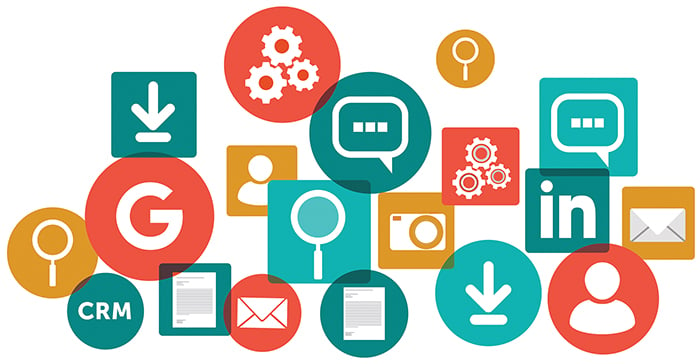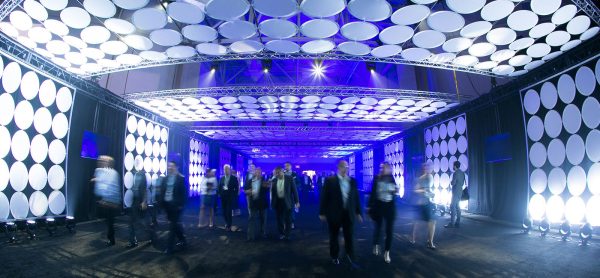Drive Bottom-Line Results with Strategic Sales Team Engagement
If you are the one responsible for directing a large sales force into the future of annual sales increases, the pressure is on to inspire, align and...

By Vanessa Vaughan, VP, Account Director
This is a common and critically important question, but one that can be difficult to answer in a definitive way. There’s not one right answer. At August Jackson, we measure success for each client and project in customized ways – ensuring we take into consideration business goals and objectives alongside equally desirable outcomes like organizational alignment or employee engagement.
Early in the planning phase, consider this 5-step process. There are more exhaustive approaches for determining event ROI, but this simple framework should help guide your event strategy and help you quantify and communicate your event’s impact.
At August Jackson, purpose is always our focus. If you don’t know the central purpose of your event, you will have a really hard time determining what data or results to track. Are you trying to garner more qualified leads? Build brand excitement or launch a product? Do you need to inspire and motivate your global salesforce to drive sales? Does your philanthropic campaign launch need to inspire donor or alumni communities?
The ultimate business goal will drive how you measure success, but you will also want to identify other Key Performance Indicators (KPI’s) for measuring less tangible objectives.
After you’ve detailed all the goals you have for your event, take a moment to think about the one goal that stands out amongst the others. This ultimate business goal must drive how you measure your success.
Now that you’ve identified your ultimate goal and supporting goals, it’s much easier to pinpoint the measurable objectives associated with those goals. You might be wondering, “Well, what’s the difference between goals and objectives?” Think of your goals as the purpose of your event. They set the big picture. Your objectives, on the other hand, are the map to how you’re going to reach the finish line (a.k.a., achieving your goals). Your objectives should set clearly defined, detailed, focused, tangible, and measurable results for your event.
A great rule of thumb to follow is that your objectives should be “SMART” – Specific, Measurable, Achievable, Relevant and Timely.
 S – Specific: Exactly what do you want to achieve? Be very clear, focused and specific. Ambiguity is not your friend when it comes to achieving true event ROI. Get buy-in from your leadership team to ensure everyone is agreement.
S – Specific: Exactly what do you want to achieve? Be very clear, focused and specific. Ambiguity is not your friend when it comes to achieving true event ROI. Get buy-in from your leadership team to ensure everyone is agreement.
M – Measurable: It must be possible to concretely measure your objectives, otherwise, how will you know if you’ve achieved success? It’s important to ensure that the proper measurement tools are in place before your event launches, which we will discuss later in this post.
A – Achievable: If you are too ambitious in your objective-setting, there’s no way you’re going to achieve anything even close to the results you’re after. It’s perfectly alright to be confident, but make sure you’re being realistic at the same time.
R – Relevant: Will this objective ensure that your event has the right impact on your organization and will it help you achieve a purposeful mission, aligned with your brand, mission and audience?
T – Timely: The path to your objective should be paced in a timely manner that will give you and your team a reasonable sense of urgency, but doesn’t send your team into a frenzy or risk brand integrity.
SMART objectives in mind, let’s go back to our earlier example – hosting a sales conference.
Goal = increase sales
With SMART objectives that support this goal:
SMART objectives will help you stay focused on what matters most to your organization. Once defined, the process of making decisions about things like the venue, promotional strategies, or key messaging will flow more easily.
To recap – for each goal you set, you should outline targeted SMART objectives so that you can determine what data to track and what processes and tools you’ll need to employ in order to measure your success against these objectives.
You know your goals. You’ve outlined your objectives. Now you need to identify which data points will help you understand how well you’ve succeeded against your objectives.
Here is a list of common data types you may want to capture depending on your audience and the type of event:

Now that you have a list of data points you’re striving for, let’s outline the technologies and tools you’ll potentially want to employ.
Customer Relationship Management (CRM) software: CRM software allows a business to manage relationships with their customers and track data associated with these customers. And you’ll want to ensure that your sales team is prepared to log information about customer interactions from your event in order to pinpoint attendee trends and track engagement. This tool will be pivotal when it comes to tracking event-related sales goals.
If you haven’t started using CRM for your business just yet, check out this great article from Business News Daily that not only outlines the features you should look for in CRM software, but lets you take a quick quiz to get an idea of which platform would be best for your particular needs.
Marketing automation software: Marketing automation software will help you fulfill some of your most critical tasks with regard to planning and managing your event, including promoting via email or social media, tracking registrations, and recording customer behavior that can be synced with your CRM. We think this blog post from G2 Crowd is an excellent resource to choose which is right for your business.
Analytics tools: There are endless amounts of analytics tools that exist, promising the latest and greatest audience data. But before exploring the sea of options, make sure you’ve at least set up these proven platforms.
Survey tools: One of the best ways to collect both qualitative and quantitative data is through a survey. Constant Contact has built-in survey capabilities. So do many marketing automation platforms. You can also use other independent platforms like Survey Monkey or Survey Gizmo.
Trending event technology: Go above and beyond and see if any of these trending event technologies makes sense for your event goals and business objectives:
 So you’ve got all this data… now what? It’s time to analyze the information and results you’ve gathered against the benchmarks you recorded pre-event in order to determine if you’ve achieved event success towards your goals.
So you’ve got all this data… now what? It’s time to analyze the information and results you’ve gathered against the benchmarks you recorded pre-event in order to determine if you’ve achieved event success towards your goals.
To begin the analyzation process, start by understanding the total cost of your event. But if you’re tracking costs using either your event management software or accounting software, this number shouldn’t be too difficult to identify.
Finally, in order to unveil your true returns, you need to decide what type of returns are most important to your event and to your business:
Return on Investment (ROI) – In the most straightforward sense, you can determine the ROI of your event by taking the value of your event revenue and dividing that by the event costs.
Return on Objectives (ROO) – There are some who prioritize ROO in addition to your ROI, because a successful event should also be based on success against clearly-outlined objectives. Plus, ROO will help you identify the areas of your event that need improvement.
Return on Engagement (ROE) – Defined as the brand strength gained as a result of the event. This concept is gaining momentum in both the event world and the business world alike, as both event audiences and customers seek deep brand connection, inspiration, and opportunities to enhance their own life purpose. A few ways you might identify and measure Return on Engagement:
At August Jackson, we are dedicated to putting purpose into practice. Helping our clients deepen their engagement with their audience at an event, and achieve a healthy ROI, goes hand-in-hand with what we do as an agency partner.

When one of our clients came to us after a major merger (the fusion of two Silicon Valley giants), they had a burning challenge to solve: how could they quickly gain the support of their combined and extensive partner network?
Their central goal – to integrate and inspire legacy partner networks from both merger entities, plus all sales and marketing executives from the new corporation.
A few examples of some of the supporting SMART objectives include:
The results:

